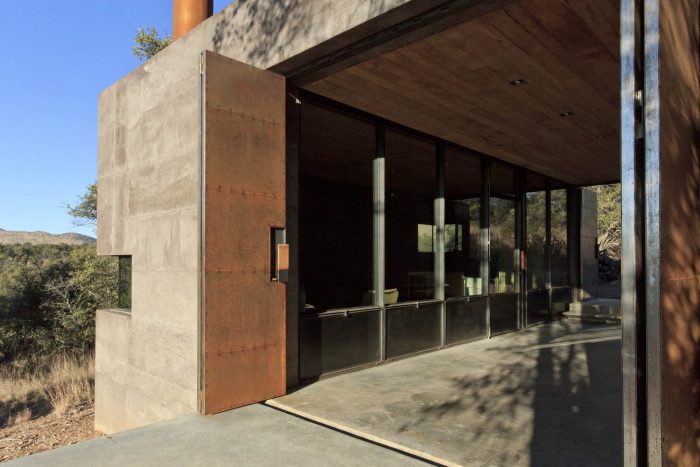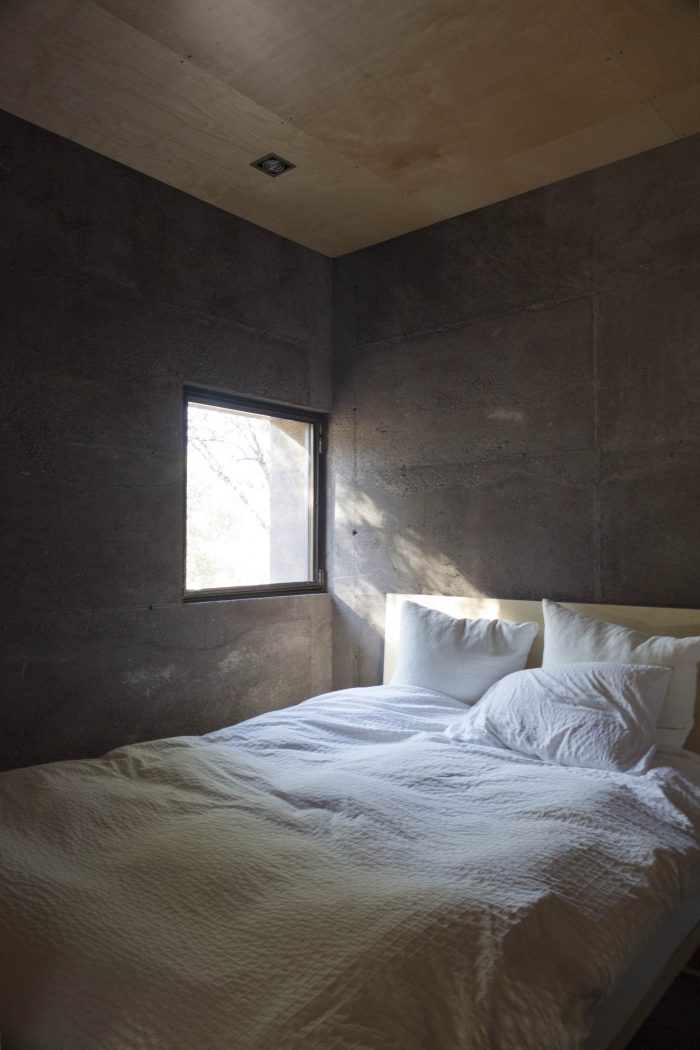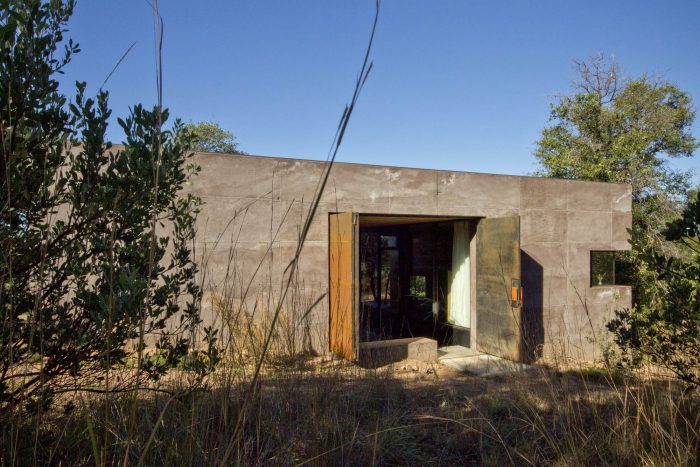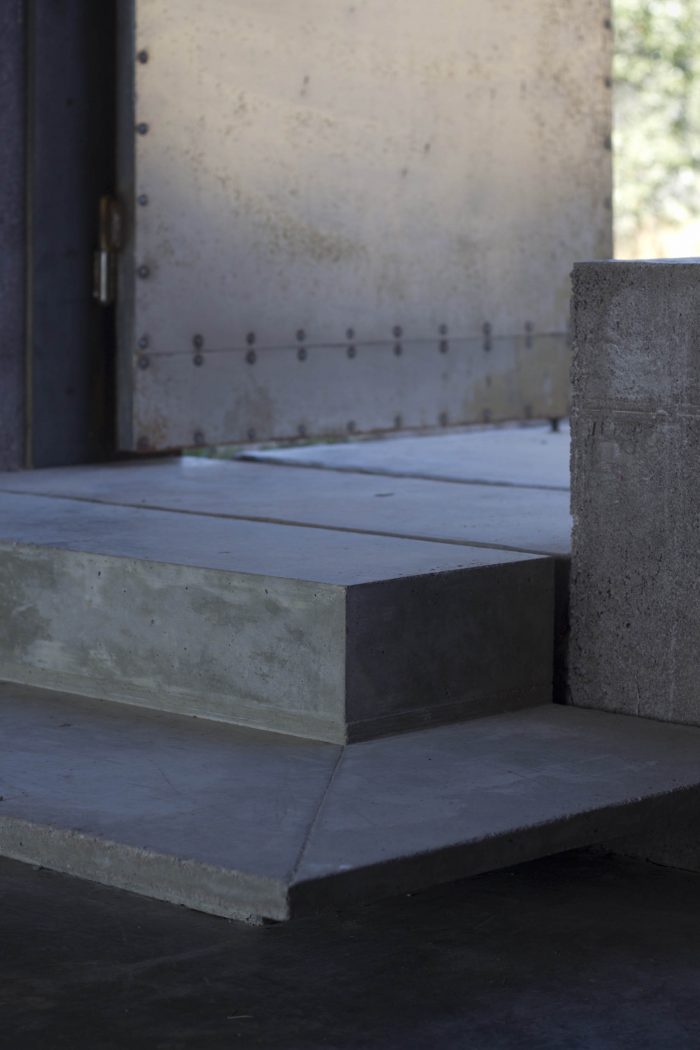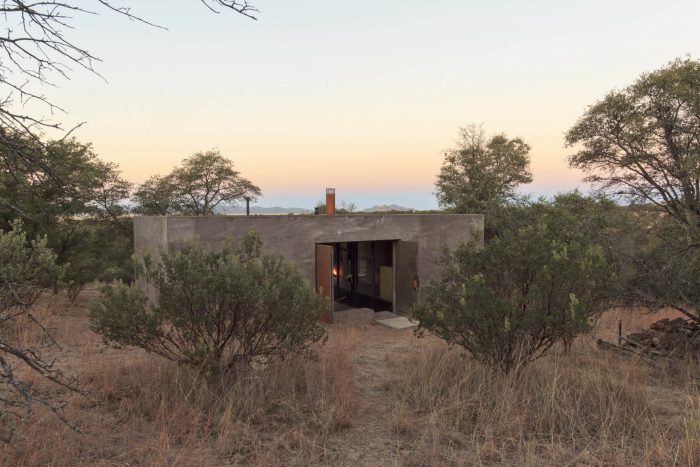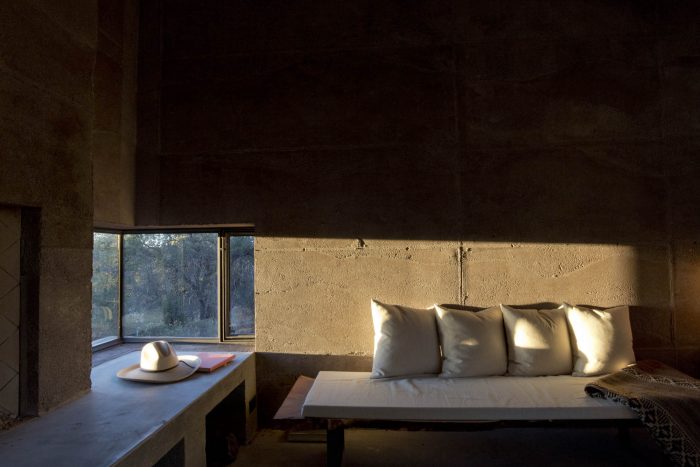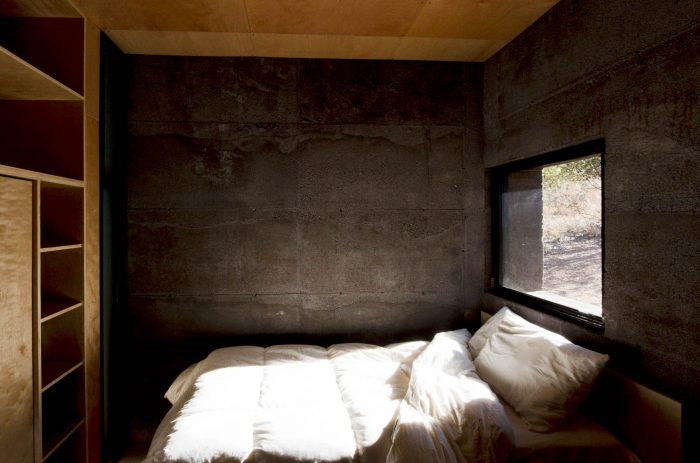这个地方的故事深深植根于该地区的历史和文化之中。
该地区的生物多样性是更大的马德雷群岛的一部分,该群岛从索诺兰沙漠到奇瓦欢沙漠,再到亚利桑那州南部、新墨西哥州南部和德克萨斯州远西部分地区。天空岛山脉是广阔的沙漠景观中生命和居民的灯塔。它们是连接墨西哥马德雷山脉北端的链条中的一环,在该地区的生命故事中是必不可少的;它们是迁徙部落、鸟类和掠食者在广阔的空地上移动的避难所和资源基地。
The story of this place is rooted deep in the history and culture of the region.
The biodiversity of the region is part of the larger Madrean Archipelago, which stretches from the Sonoran to Chihuahuan deserts, to parts of Southern Arizona, Southern New Mexico, and parts of Far West Texas. The sky island ranges serve as beacons for life and inhabitants in the vast desert landscape. They are links in a chain that connect the northern end of the Sierra Madres in Mexico, and are essential in the story of life in the region; in form of refuge and resource base for migrating tribes, birds, and predators moving through the vast openness.
圣拉斐尔谷的地形和地质构成了圣克鲁斯河的源头,圣克鲁斯河是仅有的一条向南进入墨西哥并向北返回美国的河流。
The San Rafael Valley’s topography and geology form the headwaters of the Santa Cruz River, one of the only rivers that runs south into Mexico, and turns back north into the U.S. This river is vital to the story of the habitation of this region for the past 10,000 years.
人类历史的大部分内容都借由数百万年前该地区的地质事件来描述。 大规模的火山活动形成了我们现在所知道的景观。这留下了盆地和山脉的地形,以及矿物和资源丰富的土地,这些土地对居住在该地区的文化具有价值和用途。
Much of the human history lends itself to the geological events of the region millions of years ago. Large volcanic activity formed the landscape as we know it now. This left behind the basin and range topography, as well as mineral and resource rich land that has been of value and use to the cultures that inhabited the region.
从原生农业文化,到游牧狩猎采集者,到征服者和传教士,到拓荒者、矿工、牧牛人和牛仔,再到民兵、移民和缉毒者,这是典型的狂野西部的景观和民俗。
From native agricultural cultures, to nomadic hunter-gatherers, to conquistadors and missionaries, to pioneers, miners, cattle, and cowboys, to militia, migrants, and narcotraficantes, it is the landscape and folklore of the quintessential Wild West.
Casa Caldera正是在这种历史和背景下成长起来的。这个小小的庇护所受到气候条件的强烈影响;适应自然、社会、政治和经济环境,每个环境都有自己的权重和不同程度的影响。
It is this history and context that Casa Caldera grows from. This small shelter is strongly informed by the climatic conditions; adapting to the natural, social, political, and economical environments, each to its own weighted and varying degree.
该建筑是一个945平方英尺的庇护所,位于亚利桑那州南部圣拉斐尔山谷卡内洛山的西南巴哈达上,这里是图森东南两小时的高沙漠,距离美国和墨西哥的国际边界以北15英里。它位于海拔5000英尺以下,坐落在埃默里橡树和曼萨尼塔斯之间。该结构从定义山坡和开阔的山脉之外的本地草丛中出现。房子的选址是一个谈判,以找到一个平衡的前景之间的开放范围和山,从猎人,发现者和潜在的移民的庇护。你不知道的结构,直到你在它。
The structure is a 945 square foot shelter located on the southwestern bajada of the Canelo Hills in Southern Arizona’s San Rafael Valley, a high desert two hours southeast of Tucson and 15 miles north of the international border between the U.S. and Mexico. It sits just under 5000 feet above sea level, nestled amongst emory oaks and manzanitas. The structure emerges from the native grasses that define the hillside and open ranges beyond. The siting of the house was a negotiation to find a balance between the prospect of the open range and mountains, and the refuge from hunters, discoverers and potential migrants. You are not aware of the structure until you are upon it.
为了强调这种避难所的品质,结构的材料被选择为与环境相融合,并做出了关闭的方案。群墙由熔岩克里特浇筑而成,这种材料的先驱保罗-施瓦姆(Paul Schwam)改进了工艺和产品,并在该地区的建筑界使用,特别是保罗-韦纳(Paul Weiner)和Design Build Collaborative。它被当地人看作是一种新的乡土材料,由红色的scoria,一种粉状的熔岩、水泥和水的混合物组成,形成一种自支撑的半流体材料,被夯入模板中,类似于夯土。由此产生的效果与周围的草木形成了微妙的对比,随着一年四季光线的特质而发生微妙的变化,与景观和谐地融合在一起,显得草木、橡树、山竹和岩石仿佛属于那里。
To emphasize this refuge quality, the material of the structure was chosen to blend in with the environment, and the program made to close down. The mass walls are constructed of poured lava crete, a process and product refined by the material’s pioneer, Paul Schwam, and used in the region’s architectural community, notably by Paul Weiner and Design Build Collaborative. It is seen by locals as a new vernacular material, comprised of a mixture of red scoria, a pulverized lava rock, cement, and water that forms a self-supporting semi-fluid material which is rammed into formwork similar to rammed earth. The resulting effect was a subtle contrast to the grasses around, changing subtly to the qualities of light through the year, blends harmoniously with the landscape appearing as if it belonged there with the grass, oaks, manzanitas and rocks.
客户对户外生活区和睡眠区的要求导致了对当地乡土房屋规划类型的重新发现,并将其作为Casa Caldera的主要组织概念–一个Zaguan。
The clients request of having outdoor living and sleeping zones lead to the re-discovery of a local vernacular house planning typology that was used as the main organizing concept of Casa Caldera – a Zaguan.
Zaguan两端的大型双折式金属门将有顶的生活空间与外面的景观连接起来。在东边,Zaguan像一个全比例的立体图一样打开,在西边,故事书的景色延伸到遥远的景观,穿过圣拉斐尔山谷和巴塔哥尼亚山脉。
Large bifolding metal doors on either end of the Zaguan connect the covered living space to the landscape beyond. To the east the Zaguan opens up like a full scale diorama and to the west the story book view stretches to the distant landscape across San Rafael Valley and the Patagonia Mountains.
双层折叠门在打开时可提供自然光和被动冷却风,关闭时可提供安全保障。随着季节、用途和生活方式的变化,门可以以无数种方式进行配置,需要主人进行互动和响应,使用双扇门来控制太阳能的获得或以不同的方式利用微风。当温度适宜时,Zaguan是一个受保护的有顶空间,用于休息、用餐和睡眠。
The bi-folding doors deliver natural light and harness passive cooling breezes when open and security when closed. The doors can be configured in a myriad of ways, as seasons, use, and lifestyle requires the owner to interact and respond, using the bi-folding doors to control the solar gain or harness the breezes in different ways. When the temperatures are appropriate the Zaguan is a protected covered space used for lounging, dining and sleeping.
Zaguan作为一个空间提供了一种罕见的体验,在这里,人们可以放慢脚步或完全停止脚步,只需在一个单一的焦点视图中欣赏自然环境,并实际见证时间的流逝。
The Zaguan as a space offers the rare experience where one can slow down or stop altogether, and simply take in the natural environment in a single focused view and physically witness time passing.
唯一的热源是燃木炉和壁炉。 从经验上来说,在冬天,人们醒来后首先想到的就是火。 亚利桑那州埃默里橡树燃烧的气味在气味的记忆中进一步区分了房子的体验性。
The only sources of heat are a wood burning stove and fireplace. Experientially, in the winter, the first thing one thinks of when they wake is fire. The smell of the Arizona Emory oaks burning further distinguishes the experiential nature of the house in the memory of scent.
冷却是通过18英寸厚的scoria墙的热抵消以及由于两侧的正负压而使空气自然流动通过Zaguan实现的。在安置外窗时,我们仔细考虑了太阳的方向,外窗保持较小,以尽量减少夏季的太阳直射热量。
Cooling is achieved through the thermal offset of 18” thick scoria walls and the natural flow of air that moves through the Zaguan due to the positive and negative pressures on either side. Solar orientation was carefully considered in the placement of exterior windows, which were kept small to minimize direct solar heat gain in the summer.
所有的窗户都是可操作的,客厅窗墙的踢脚和横梁、卧室入口和槽窗也是可操作的,这些窗户可以驾驭和拉出扎关的空气,并通过生活区和睡眠区。在通往睡眠区的通道上多加了一扇门,当两者都打开时,烧木头的小炉子也可以为扎官空间供暖,在需要的时候,可以举行晚宴和小型聚会。这种可操作性进一步让业主作为一个积极的参与者参与到房子的体验中来。
All of the windows are operable, as well as the kicks and transoms of the living room window wall, bedroom entry and slot windows that harness and pull air out of the Zaguan and through the living and sleeping zones. An extra door was added to the access to the sleeping zone, so that when both are open, the small wood burning stove can also heat the Zaguan space for dinner parties and small gatherings when desired. This operability further engages the owner as an active participant in the experience of the house.
一口现有的水井为房子提供水源,一个小型的太阳能电力系统远离房子,提供基本的电力使用。尽量少用照明,全部采用低压LED。烹饪、热水和制冷都由丙烷气提供动力。
An existing well provides water for the house, and a small solar electrical system sits away from the house to provide for basic electrical power use. Minimal lighting is used, all low voltage LED. Cooking, water heating and refrigeration are all powered by propane gas.
卡萨卡尔德拉几乎完全是定制的。墙体、钢窗、门、五金、皮革拉手、木质护墙板、木工、案板和框架都是由DUST制造和安装的。天花板和Zaguan墙壁上使用的木材是回收的檫木。Casa Caldera是完全不使用电网的。
在建造Casa Caldera的过程中,只产生了三十码的废料,一卷一卷的。
Casa Caldera is almost entirely custom built. The scoria walls, steel windows, doors, hardware, leather pulls, wood siding, millwork, casework and framing were all fabricated and installed by DUST. The wood that is used on the ceiling and Zaguan walls is reclaimed sassafrass. Casa Caldera is entirely off grid.
Only thirty yards of waste, one roll-off, was created in the making of Casa Caldera.
建筑师:DUST
面积: 945平方英尺
年份:2015年
摄影:Cade Hayes
总承包商:DUST
项目经理:Jesus Robles, Cade Hayes
木工:Jay Ritchey
混凝土和砖瓦工程:Agustin Valdez
室内装修 : 530平方尺
总承包商:DUST
国家:美国
Architects: DUST
Area: 945 ft²
Year: 2015
Photographs: Cade Hayes
General Contractor :DUST
Project Manager:Jesus Robles, Cade Hayes
Carpentry:Jay Ritchey
Concrete And Masonry:Agustin Valdez
Interiors:530 sq ft
General Contractor:DUST
Country:United States










